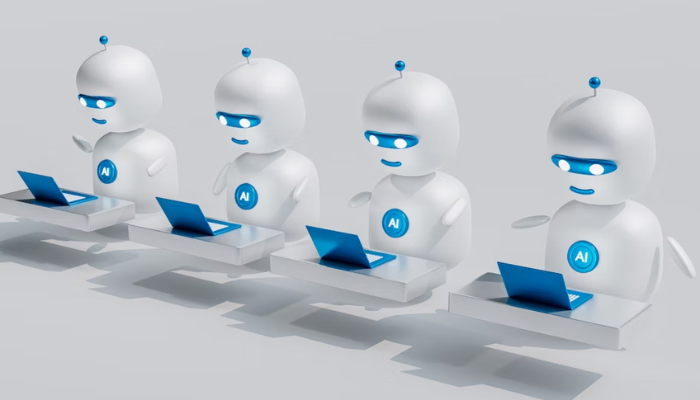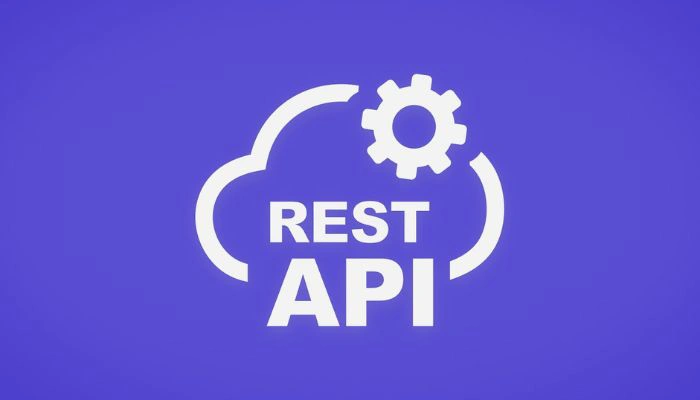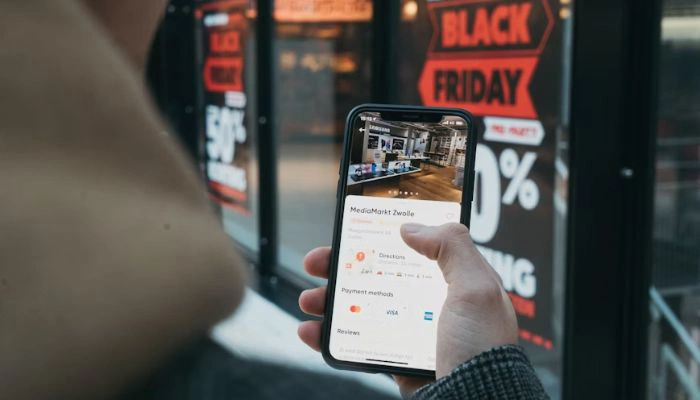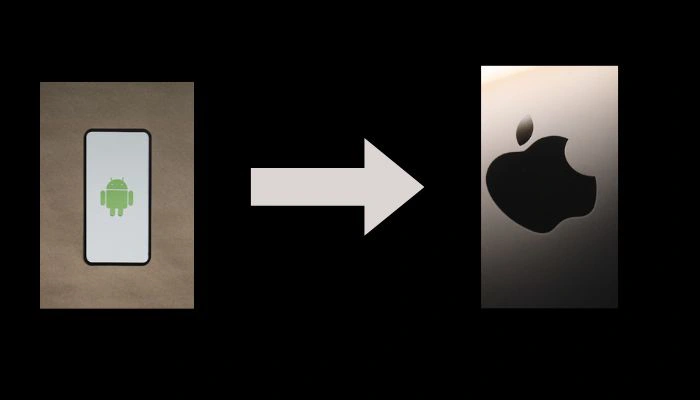How the Internet of Things is Transforming Small Businesses
Technology is no longer just a tool but the very engine of business growth. While much of the buzz around cutting-edge innovations like artificial intelligence and blockchain often centers on large corporations, there's a quieter, more profound revolution taking place. The Internet of Things (IoT) is an interconnected network of physical devices, sensors, and software that are fundamentally changing how small and medium-sized businesses (SMBs) operate. It's a shift from reactive to proactive, from manual to automated, and from guesswork to data-driven decision-making. For the small business owner, this isn't just about adopting new gadgets; it's about unlocking unprecedented levels of efficiency, cost savings, and competitive advantage.
The Internet of Things in small businesses is proving to be a game-changer by providing a scalable and affordable way to leverage real-time data. From a local coffee shop using smart sensors to monitor its espresso machine's health to a small logistics company tracking its fleet with GPS, IoT technology provides actionable insights that were once the exclusive domain of Fortune 500 companies. The ability to monitor equipment, manage inventory, and understand customer behavior in real-time allows for faster, more informed responses to operational challenges. In a world where every minute and every dollar counts, this kind of insight is invaluable. This post will serve as your comprehensive guide to understanding and implementing the power of IoT within your own small business.
As we delve deeper into this topic, we will explore the tangible benefits and practical applications of the Internet of Things. We'll break down the key areas where IoT can have the most significant impact on your operations and profitability, and provide clear, actionable steps for getting started. We will also address the common concerns and challenges that often deter small business owners from adopting this technology, offering solutions and best practices to ensure a smooth and successful implementation. Get ready to discover how a smarter, more connected business can lead to a more prosperous future.
What is the Internet of Things in Small Businesses?
The Internet of Things in small businesses refers to the use of interconnected devices and sensors to collect and exchange data, automating processes and providing real-time insights to improve efficiency and decision-making. At its core, IoT is about making "dumb" things smart. A traditional thermostat simply controls temperature; an IoT-enabled smart thermostat, however, learns your habits, adjusts itself based on occupancy, and can be controlled remotely, all while providing data on energy usage.
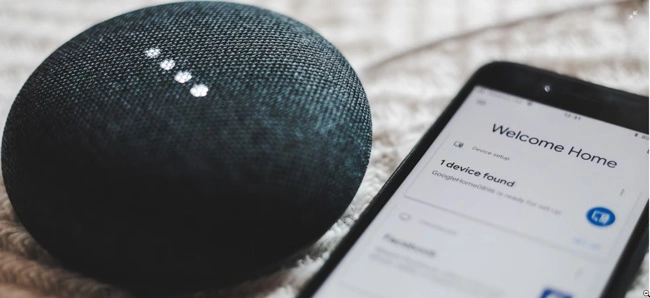
When applied to a small business, this same principle extends to a myriad of devices and processes, from a retail store's inventory tags to a farm's soil moisture sensors.
The ecosystem of IoT in a small business typically involves three main components:
- Smart Devices: These are the "things" themselves. They are embedded with sensors, software, and other technologies that enable them to collect data from their environment. Examples include smart security cameras, GPS trackers for vehicles, and RFID tags for inventory.
- The Network: This is the communication channel that allows the smart devices to send and receive data. This can be Wi-Fi, Bluetooth, cellular networks (like 5G), or even low-power wide-area networks (LPWANs) designed specifically for IoT.
- The Platform: This is the software and services that collect, process, and analyze the data from the devices. An IoT platform often includes dashboards for visualization, alerts for anomalies, and tools for data-driven decision-making.
By connecting these three components, a small business can build a powerful system that provides a holistic view of its operations. This is a crucial first step in moving away from reactive, guesswork-based management toward a proactive, data-informed strategy that can lead to significant growth and improved profitability.
How Can I Use the Internet of Things to Improve My Business?

This is often the most pressing question for small business owners. The applications of IoT are vast and varied, but they all boil down to leveraging data to create a smarter, more efficient operation. Here are some of the most impactful ways you can use IoT to improve your business:
- Automated Inventory Management: Imagine a warehouse where shelves are equipped with weight sensors or RFID readers that automatically track stock levels. When a product falls below a certain threshold, the system can automatically place a reorder, eliminating the need for manual stock counts and reducing the risk of stockouts. This not only saves time but also ensures that you always have the right products on hand to meet customer demand.
- Enhanced Security and Monitoring: IoT-enabled security cameras and smart locks allow business owners to monitor their premises remotely from their smartphones. They can receive real-time alerts for motion detection or unauthorized entry attempts. This provides peace of mind and can significantly reduce the risk of theft or vandalism, especially for businesses with multiple locations or those operating outside of regular business hours.
- Predictive Maintenance: For businesses that rely on expensive machinery, such as a bakery or a print shop, unexpected equipment failure can be disastrous. By placing sensors on key equipment, you can monitor parameters like temperature, vibration, and performance. An IoT platform can analyze this data and predict when a part is likely to fail, allowing you to schedule maintenance proactively before a breakdown occurs. This minimizes costly downtime and extends the lifespan of your valuable assets.
- Optimized Energy Consumption: Smart thermostats and lighting systems can automatically adjust based on occupancy and time of day, significantly reducing energy waste. For instance, a small office can program its HVAC system to shut off at the end of the workday and power back on before employees arrive, leading to noticeable savings on utility bills.
- Improved Customer Experience: In the retail sector, IoT can create a more personalized shopping experience. Beacon technology can send targeted promotions to customers’ smartphones as they walk past a specific display. In a restaurant, smart sensors can track table occupancy, helping staff manage waitlists more efficiently and improve the overall flow of service.
What Are the Benefits of Adopting the Internet of Things?
While the applications are diverse, the benefits of adopting IoT for small businesses are clear and compelling. The return on investment (ROI) often comes from a combination of cost reduction, increased revenue, and improved operational resilience.
Here is a table outlining some of the key benefits:
| Benefit | Description | Example |
| Increased Efficiency | Automating routine tasks and optimizing workflows to save time and resources. | A logistics company using GPS trackers to plan the most efficient delivery routes, saving on fuel and labor costs. |
| Cost Savings | Reducing operational costs through optimized resource consumption and proactive maintenance. | A small manufacturing plant using smart sensors to monitor machinery and prevent costly, unplanned downtime. |
| Data-Driven Insights | Gaining a deeper understanding of business operations and customer behavior through real-time data analysis. | A retail store analyzing foot traffic data to optimize product placement and staffing schedules. |
| Enhanced Security | Utilizing smart devices for remote monitoring and enhanced protection of physical assets and data. | A small chain of restaurants using smart security systems to monitor all locations from a single dashboard. |
| Competitive Advantage | Differentiating from competitors by offering a more personalized customer experience and a more agile, modern operation. | A local gym offering its members smart wearable devices to track their workouts and provide personalized coaching. |
What Are the Challenges and Risks of IoT Implementation?
Despite the clear benefits, implementing IoT is not without its challenges. For small businesses, these concerns often center on cost, complexity, and security.
High Initial Investment: While many IoT solutions are becoming more affordable, the initial cost of hardware, software, and professional installation can be a barrier for some small businesses. It's crucial to start with a pilot project in a single area of the business to demonstrate a clear ROI before scaling up.
Security and Privacy Concerns: Every new connected device represents a potential entry point for hackers. The data collected by IoT devices, especially customer data, must be protected with robust security protocols. Small businesses must prioritize strong passwords, network segmentation, and regular software updates to mitigate this risk.
Lack of In-House Expertise: Many small businesses lack the technical staff with the skills to set up, manage, and maintain an IoT ecosystem. This often necessitates hiring external consultants or relying on third-party service providers, which adds to the cost and complexity.
Integration Challenges: Many legacy systems used by small businesses are not built to communicate with modern IoT devices. Integrating new technologies with existing infrastructure can be a daunting task, leading to potential data silos and operational disruptions. Choosing solutions with open APIs and focusing on platforms designed for seamless integration is key.
Practical Case Studies: Internet of Things in Small Businesses in Action
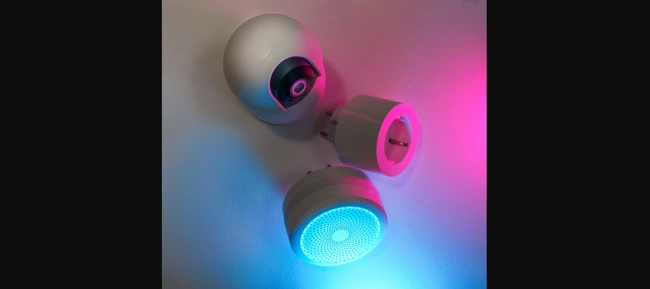
To truly appreciate the power of IoT, let's look at a few hypothetical, yet realistic, case studies of how the Internet of Things in small businesses is being applied today:
- A Local Coffee Shop: "The Daily Grind" uses IoT to streamline its operations. Smart coffee machines with embedded sensors monitor their performance and automatically notify the owner when a component needs maintenance. Smart refrigerators track inventory levels of milk and other perishables, sending alerts when restocking is required. This predictive approach minimizes downtime and waste, ensuring a consistent product and reducing operational costs.
- A Small Landscaping Company: "Green Thumb Landscaping" uses IoT for fleet and equipment management. GPS trackers on their trucks provide real-time location data, allowing for optimized routing and improved fuel efficiency. Sensors on their mowers and other heavy equipment track usage and health metrics, enabling the company to schedule maintenance proactively and prevent costly breakdowns during the busy season.
- An Independent Boutique: "Urban Threads" has implemented an IoT-based security system. Smart cameras with AI-powered analytics monitor customer flow and identify potential security threats. Smart locks provide secure, keyless access for employees and delivery personnel, with a complete log of all entries and exits. This enhances both physical security and operational oversight.
Getting Started with the Internet of Things

Ready to unlock the potential of IoT for your business? Here are some simple, actionable steps to get you started:
- Start Small: Don’t try to overhaul your entire business at once. Identify a single, high-impact area where you can test a basic IoT solution. For example, if energy costs are your biggest concern, start with smart thermostats and lighting controls.
- Define Your Goals: What problem are you trying to solve? Is it reducing costs, increasing efficiency, or improving customer experience? A clear objective will guide your choice of technology and help you measure success.
- Choose the Right Provider: Look for vendors that offer scalable, user-friendly solutions with robust security features and reliable customer support. Many providers now offer packages specifically designed for small businesses.
- Train Your Team: Educate your employees on how to use the new technology and why it's being implemented. A smooth transition and successful adoption depend on buy-in from your staff.
Conclusion
The Internet of Things is no longer a futuristic concept but a present-day reality that is making a tangible difference for small businesses worldwide. By providing a pathway to automation, data-driven decision-making, and enhanced operational efficiency, IoT empowers small business owners to compete more effectively and build a more resilient and profitable future. The key is to start small, stay focused on your business objectives, and embrace the power of connectivity. The unseen revolution is here, and it's ready to work for you.
To explore how tailored IoT solutions can transform your business operations and give you a competitive edge, contact us today for a personalized consultation.

